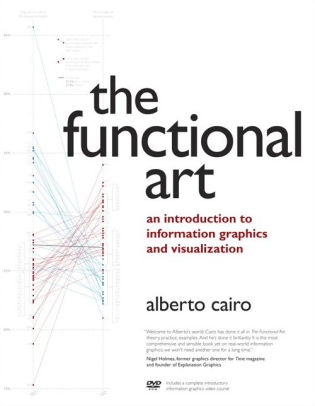Go offline with the Player FM app!
Visual Trumpery or How Alberto Cairo Confronts Fake News and Statistics
Manage episode 202635925 series 1000316

Like many of us, Alberto Cairo is a polls-junky. Whenever election season comes around, he gets locked into the numbers. But for Cairo, it’s not just a seasonal passion; he’s devoted his academic studies to graphical representations of data in news media. Currently, he teaches data visualization at the University of Miami.
Cairo became interested in data visualization after a professor noticed his ability to create quick, rudimentary sketches. The professor recommended Cairo for an internship in a graphics department for a newspaper in Spain. He was unfamiliar with data visualization when he started, but loved the field after the internship. Since his college days, he’s written two books on the subject and runs a blog called The Functional Art.
On April 15, 2018, Cairo will deliver a talk called “Visual Trumpery” at the Ohio State’s Science Sundays lecture series, a free and open to the public event. Cairo initially called the talk “How Charts Lie,” but thought it was too dull and didn’t have the draw, so he retitled it to include the word trump, meaning showy but worthless, because it’s related to the current president’s name. However, he asserts the lecture is relatively bias-free and draws on bad graphs and data from the right and the left. His primary goal is to show people how to spot the fake data and charts and to teach people how to create better, more accurate visuals.
Cairo likes to talk about percentages and how they translate to a graph. He mentions that at some point during the 2016 election, Donald Trump had a 17% chance to win the election. This statistic seems low but Cairo likens this to rolling a “1” on a six-sided dice. Cairo believes including examples like this on charts will help people discover more interesting things and understand the magnitude of data.
According to Cairo, the world of charts and graphs is simultaneously improving and getting worse. Because of the Internet, there’s a lower barrier of entry to creating and disseminating charts and graphs, which means anybody can make a figure that says anything they want. However, reputable news magazines on the right and left are using these tools to create better data-driven charts and stories.
Listen in for more about visual trumpery and then attend Professor Cairo’s talk.
201 episodes
Manage episode 202635925 series 1000316

Like many of us, Alberto Cairo is a polls-junky. Whenever election season comes around, he gets locked into the numbers. But for Cairo, it’s not just a seasonal passion; he’s devoted his academic studies to graphical representations of data in news media. Currently, he teaches data visualization at the University of Miami.
Cairo became interested in data visualization after a professor noticed his ability to create quick, rudimentary sketches. The professor recommended Cairo for an internship in a graphics department for a newspaper in Spain. He was unfamiliar with data visualization when he started, but loved the field after the internship. Since his college days, he’s written two books on the subject and runs a blog called The Functional Art.
On April 15, 2018, Cairo will deliver a talk called “Visual Trumpery” at the Ohio State’s Science Sundays lecture series, a free and open to the public event. Cairo initially called the talk “How Charts Lie,” but thought it was too dull and didn’t have the draw, so he retitled it to include the word trump, meaning showy but worthless, because it’s related to the current president’s name. However, he asserts the lecture is relatively bias-free and draws on bad graphs and data from the right and the left. His primary goal is to show people how to spot the fake data and charts and to teach people how to create better, more accurate visuals.
Cairo likes to talk about percentages and how they translate to a graph. He mentions that at some point during the 2016 election, Donald Trump had a 17% chance to win the election. This statistic seems low but Cairo likens this to rolling a “1” on a six-sided dice. Cairo believes including examples like this on charts will help people discover more interesting things and understand the magnitude of data.
According to Cairo, the world of charts and graphs is simultaneously improving and getting worse. Because of the Internet, there’s a lower barrier of entry to creating and disseminating charts and graphs, which means anybody can make a figure that says anything they want. However, reputable news magazines on the right and left are using these tools to create better data-driven charts and stories.
Listen in for more about visual trumpery and then attend Professor Cairo’s talk.
201 episodes
All episodes
×Welcome to Player FM!
Player FM is scanning the web for high-quality podcasts for you to enjoy right now. It's the best podcast app and works on Android, iPhone, and the web. Signup to sync subscriptions across devices.




